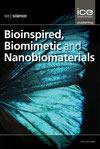In vitro and In vivo evaluation of clarithromycin solid dispersion prepared via spray drying technique
IF 0.6
4区 工程技术
Q4 ENGINEERING, BIOMEDICAL
引用次数: 0
Abstract
The aim of this study was to develop solid dispersions (SDs) of Clarithromycin (CLA) using hydrophilic polymer hydroxypropyl- methylcellulose (HPMC) and Xanthan Gum (XNG) as drug carrier. The in vitro dissolution study was performed in dissolution media of pH 6.8 and compared with that of standard drugs. In vivo pharmacokinetic studies were carried out on animal model (rabbits).The thermal behavior of each SDs formulation was studied by differential scanning calorimetry (DSC) analysis. The results concluded that crystalline nature of CLA has been transformed to amorphous form in SDs. Pharmacokinetic parameters were observed to be improved in HPMC as well as XNG based SDs than that of standard drugs. Additionally, powder X-ray diffraction (PXRD) analysis also confirmed the phase transition (crystalline to amorphous) of drug present in SDs. The higher values of Cmax, were found in case of HPMC based SDs, whereas, tmax values were prolonged in SDs based on XNG. Additionally, enhanced half-life values predicted that SDs would have potential to achieve once daily dose and improved patient compliance of drugs. Hence, the formulated SDs of poorly soluble drug, based on HPMC and XNG as carriers, exhibited more hydrophilic nature with enhanced aqueous solubility and therefore improved bioavailability as compared to that of standard drug.喷雾干燥法制备克拉霉素固体分散体的体外、体内评价
本研究的目的是以亲水性聚合物羟丙基甲基纤维素(HPMC)和黄原胶(XNG)为药物载体,制备克拉霉素(CLA)的固体分散体。体外溶出度研究在pH 6.8的溶出介质中进行,并与标准药物的溶出度进行比较。在动物模型(兔)上进行了体内药代动力学研究。通过差示扫描量热法(DSC)分析研究了每种SDs制剂的热行为。结果表明,在SDs中,CLA的结晶性质已转变为无定形形式。观察到HPMC和基于XNG的SD的药代动力学参数比标准药物有所改善。此外,粉末X射线衍射(PXRD)分析也证实了SD中存在的药物的相变(结晶到无定形)。在基于HPMC的SD中发现Cmax值较高,而在基于XNG的SD中,tmax值延长。此外,半衰期值的提高预测了SDs将有可能实现每日一次的剂量,并提高患者的药物依从性。因此,与标准药物相比,基于HPMC和XNG作为载体的难溶性药物的配方SD表现出更亲水的性质,水溶性增强,从而提高了生物利用度。
本文章由计算机程序翻译,如有差异,请以英文原文为准。
求助全文
约1分钟内获得全文
求助全文
来源期刊

Bioinspired Biomimetic and Nanobiomaterials
ENGINEERING, BIOMEDICAL-MATERIALS SCIENCE, BIOMATERIALS
CiteScore
2.20
自引率
0.00%
发文量
12
期刊介绍:
Bioinspired, biomimetic and nanobiomaterials are emerging as the most promising area of research within the area of biological materials science and engineering. The technological significance of this area is immense for applications as diverse as tissue engineering and drug delivery biosystems to biomimicked sensors and optical devices.
Bioinspired, Biomimetic and Nanobiomaterials provides a unique scholarly forum for discussion and reporting of structure sensitive functional properties of nature inspired materials.
 求助内容:
求助内容: 应助结果提醒方式:
应助结果提醒方式:


